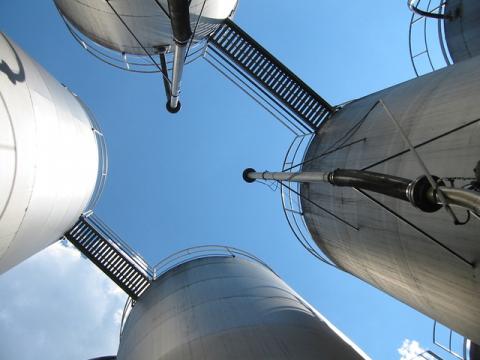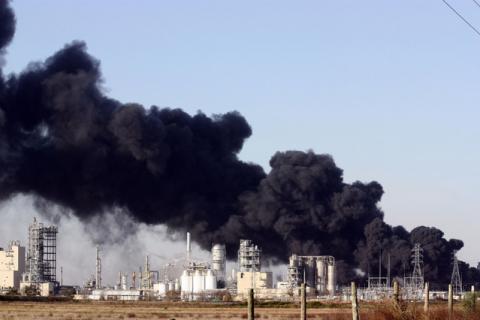Saving Money in a Chemical Facility
Chemical facilities use a variety of hazardous gases and solvents in their production processes. Danger is present when hazardous buildup of flammable vapors in the atmosphere gets rich enough to ignite or explode. The National Fire Protection Association (NFPA) establishes fire safety standards, including standards for safe operation of processes.
LFL Monitoring in Ovens, Dryers, and Incinerators
Many chemical processes involve coating a product with a flammable solvent or mixture of solvents and then heating them in a dryer, batch oven, reactor or other source. The solvents evaporate off in the heating process and are directed to an incinerator for destruction, leaving behind the finished product.
In addition to the solvents, the atmosphere may also contain moisture, halogenated hydrocarbons, silicones and other unknown substances.
Danger is present when hazardous buildup of flammable vapors in the atmosphere gets rich enough to ignite or explode.
Application Spotlight: Chemical Processes
Chemical facilities use a variety of hazardous gases and solvents in their production processes. Whenever these substances are transported, processed or stored, the potential risks are high for hazardous conditions. These substances must be continuously monitored to protect personnel and facilities from accidental releases or leakage.
A Pulp Mill In Action
For the past few weeks we've shined the spotlight on the pulp & paper application.
Season's Greetings 2017
May the magic and the wonder of the holiday season stay with you throughout the coming year.
May you be blessed with good health, much happiness, and spectacular success!
Have Fun & Be Safe!
Reliable Monitoring in Pulp Mills
The pulp mill environment is tough; its dirty, its humid, it poses safety risks to personnel, facility, & equipment. There are serious concerns about fire and explosions but also sample delivery and maintennce. You need a reliable monitoring system.
Measuring Multiple Solvents in Pulp Mills
Most monitoring systems are only able to measure the percent of flammability of a specific gas or narrow family of gases. In pulping applications, however, it is necessary to measure the overall concentration of all flammable gases and vapors entering the incinerator.
Getting a Fast Response Time in Pulp Mills
Using an analyzer with high sampling speed dramatically improves response time - an important factor in pulp mill applications.
The environment of the vent pipe that carries the Total Reduced Sulfur compounds (TRS) is dirty and humid. Most gas sensors are quickly impaired by these conditions, leading to unreliable readings.
Because most sensors can only operate at ambient, as opposed to process temperatures, they are positioned far away from incinerators, using a snaking pipe arrangement and pumps to cool samples.
Thankful for YOU
Thanksgiving is not something you feel for one day… it is an attitude you carry with you all year long. What are you thankful for? Make it a goal to think of one thing to be truly thankful for each and every day.
All of us at Control Instruments are thankful for YOU. We value your patronage & loyalty and appreciate your confidence in us. May your home be filled with the laughter of friends, the love of family, and the joys of the season.
Happy Thanksgiving...celebrate Safely!
Pagination
- Previous page
- Page 15
- Next page










